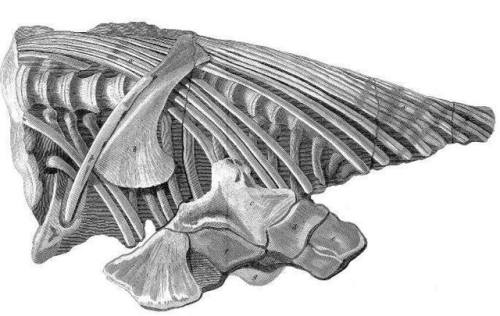This was the beast that sparked a scientific revolution: pulled from the cliffs of Lyme Regis in 181
This was the beast that sparked a scientific revolution: pulled from the cliffs of Lyme Regis in 1811, bartered and sold across England, it now rests in the Natural History Museum in London. It was not the first fossil of its kind found, nor the most impressive, but instead acted as a catalyst for the study and popularity of the reptiles that became known as the dinosaurs.The siblings, Joseph and Mary Anning, children of curiosity sellers (and later to become the leading field geologists of the period) excavated the skull and torso over a period of a year. Passing from museum to museum, it was chanced upon by Everard Home, who took it upon himself to publish a paper on the unusual animal, which was thought to have perished in the Great Deluge of the Bible. Classifying it perplexed him; he considered it to be an intermediate between crocodiles and fish, something that could be considered a transitional form (although the concept of evolution was unheard-of, this being several decades before Darwin’s seminal voyage).Home’s colleagues, Conybeare and De la Beche, originated the name ‘Ichthyosaurus platyodon’ for the specimen. Modern systemics has led to it being reclassified into the genus Temnodontosaurus, which lived roughly 200 million years ago; ichthyosaurs in general are now known to be a reptile lineage, now extinct, and well-separated from fish and crocodiles, with features that draw comparisons to marine mammals of today (such as live birth). The famous specimen is still on display, and can be seen in the fossil gallery of the Natural History Museum, London.For information on the discoverers and the Natural History Museum in London, visit:http://www.nhm.ac.uk/nature-online/science-of-natural-history/biographies/mary-anning/index.htmlThe illustrations show the skull and torso of the ichthyosaur, and were produced to accompany Everard Home’s monograph on the 1811 find (wikimedia commons) -- source link
#ichthyosaur#fossil#fossils#mary anning#geology#paleontology#fossilfriday#research#extinct

